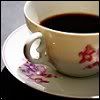Post by braided-rug on Jan 26, 2007 13:18:44 GMT 10
"Oven Preserving
On Saturday there was some discussion about preserving fruit by the oven method. There are varying opinions on the advisability of doing this, from the point of view of both safety and effective preservation. I have had people tell me it works well for them, but because of some of the risks when using oven and open pan methods, I have always preferred to bottle with a preserving outfit as it is scientifically designed and purpose built for optimum results.
A discussion of different methods used is summarised in the following information.
In the book Home Preserving by Joan Robins, the method for oven bottling is quite comprehensive. Instructions are given for a Slow Oven Method, stating that it is satisfactory for stone fruits, but not for solid pack apples, tomatoes, citrus fruits, peaches, pears, pineapples, plums or strawberries.
The method recommended is to fill the jars, stand them on a baking tray with a layer of cardboard. The oven should be pre-heated to as high as 250ºF and the tray of jars placed in the centre of the oven. The fruit should be left in the oven for up to 125 minutes. The instructions state to then remove the jars from the oven one by one (with thick oven gloves or similar), fill the bottles with boiling liquid, then put on heated caps and rubber bands.
The final steps are to close with spring clips or s crew bands s crewed tightly, then left to cool overnight.
Reading these instructions and the obvious safety and hygiene risks, it is understandable that Australian Preserving with Fowlers Vacola states:
“Oven method: This method is both dangerous and inefficient, as there is no guarantee that the temperature of the food is high enough to destroy spoilage organisms, or that a vacuum seal is created. Bottles can also explode causing damage and serious injury.”
It further states of the Open Pan/Kettle method:
“This is not recommended because of the loss of nutritional value through oxidation. There is also a danger of food contamination from airborne infections when foods are being transferred from saucepan to bottles”.
Microwave bottling is another method that has surfaced recently. Microwave Fruit Bottling by Isabel Webb gives clear instructions on the procedures for doing so. It is important to read and follow the instructions very carefully, as microwave ovens vary in wattage, and there are additional factors that can affect the preserving times. A maximum of four jars can be preserved at any one time."
(Not sure if the references are for the whole article or the part about oven preserving.)
References:
Hill, M. 1979, Australian preserving with Fowlers Vacola, Decalon Australia Pty. Ltd.
Robins, J. 1957, Home Preserving, Odhams Press Limited, Long Acre
Webb, I. 1999, Microwave Fruit Bottling, Wilkinson Printers, North Albury"
From: www.abc.net.au/hobart/stories/s1829985.htm
On Saturday there was some discussion about preserving fruit by the oven method. There are varying opinions on the advisability of doing this, from the point of view of both safety and effective preservation. I have had people tell me it works well for them, but because of some of the risks when using oven and open pan methods, I have always preferred to bottle with a preserving outfit as it is scientifically designed and purpose built for optimum results.
A discussion of different methods used is summarised in the following information.
In the book Home Preserving by Joan Robins, the method for oven bottling is quite comprehensive. Instructions are given for a Slow Oven Method, stating that it is satisfactory for stone fruits, but not for solid pack apples, tomatoes, citrus fruits, peaches, pears, pineapples, plums or strawberries.
The method recommended is to fill the jars, stand them on a baking tray with a layer of cardboard. The oven should be pre-heated to as high as 250ºF and the tray of jars placed in the centre of the oven. The fruit should be left in the oven for up to 125 minutes. The instructions state to then remove the jars from the oven one by one (with thick oven gloves or similar), fill the bottles with boiling liquid, then put on heated caps and rubber bands.
The final steps are to close with spring clips or s crew bands s crewed tightly, then left to cool overnight.
Reading these instructions and the obvious safety and hygiene risks, it is understandable that Australian Preserving with Fowlers Vacola states:
“Oven method: This method is both dangerous and inefficient, as there is no guarantee that the temperature of the food is high enough to destroy spoilage organisms, or that a vacuum seal is created. Bottles can also explode causing damage and serious injury.”
It further states of the Open Pan/Kettle method:
“This is not recommended because of the loss of nutritional value through oxidation. There is also a danger of food contamination from airborne infections when foods are being transferred from saucepan to bottles”.
Microwave bottling is another method that has surfaced recently. Microwave Fruit Bottling by Isabel Webb gives clear instructions on the procedures for doing so. It is important to read and follow the instructions very carefully, as microwave ovens vary in wattage, and there are additional factors that can affect the preserving times. A maximum of four jars can be preserved at any one time."
(Not sure if the references are for the whole article or the part about oven preserving.)
References:
Hill, M. 1979, Australian preserving with Fowlers Vacola, Decalon Australia Pty. Ltd.
Robins, J. 1957, Home Preserving, Odhams Press Limited, Long Acre
Webb, I. 1999, Microwave Fruit Bottling, Wilkinson Printers, North Albury"
From: www.abc.net.au/hobart/stories/s1829985.htm

